Abstract
By combining two of the morphological characteristics of gastric cancer, the degree of differentiation of the glandular tubules and the amount of mucus in the cytoplasm, the histological type of the gastric carcinoma was categorised into four groups. Group I: tubular differentiation--well; mucus in cytoplasm--poor; group II: tubular differentiation--well; mucus in cytoplasm--rich; group III: tubular differentiation--poor; mucus in cytoplasm--poor; group IV: tubular differentiation--poor; mucus in cytoplasm--rich. A study of the relation between the types of primary lesion and the mode of extension and recurrence of gastric carcinoma in 200 autopsy cases was then undertaken. In group I, the frequency and extent of haematogenous metastasis such as in the liver was high, while in group IV, that of lymph node metastasis, direct invasion into surrounding organ, and peritoneal dissemination were higher. In group III, which showed the intermediate mode of extension in nature to those of group I and IV, although the frequency and severity of the bone marrow metastasis was the highest. There were significant differences in the modes of development and the extent of infiltration in all groups.
Full text
PDF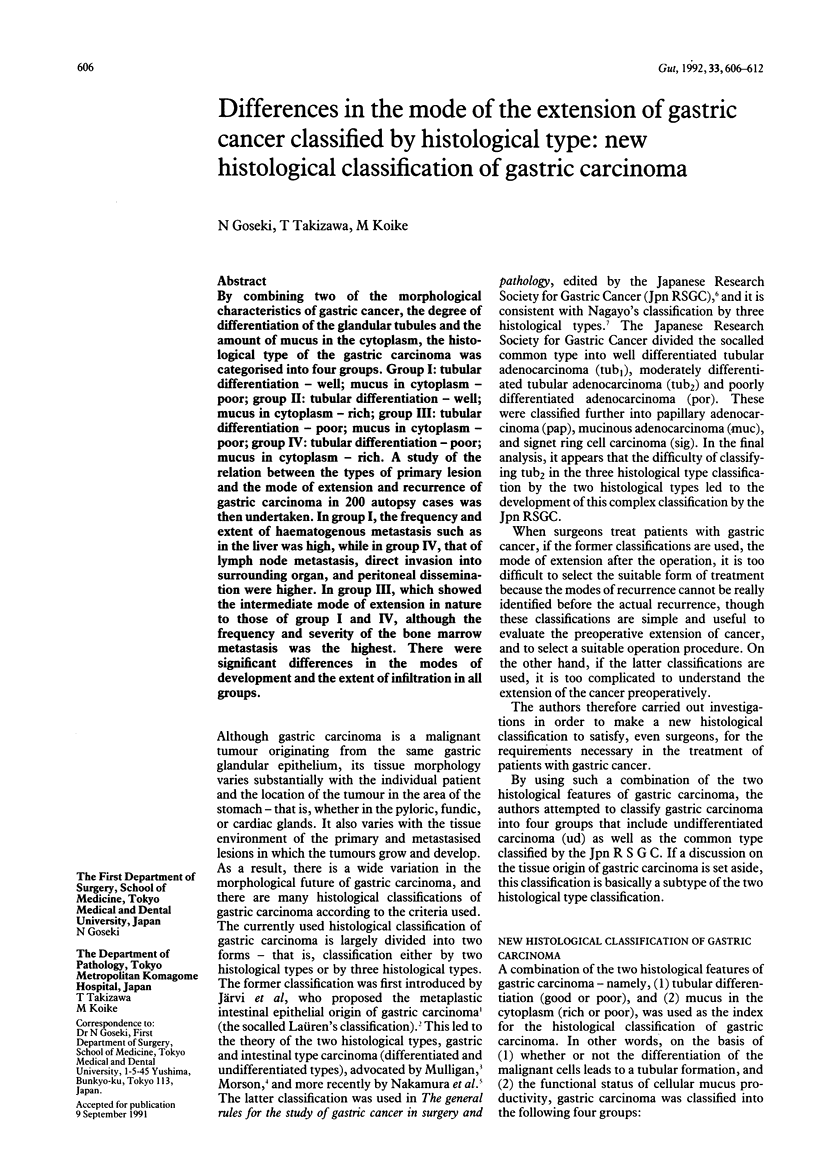
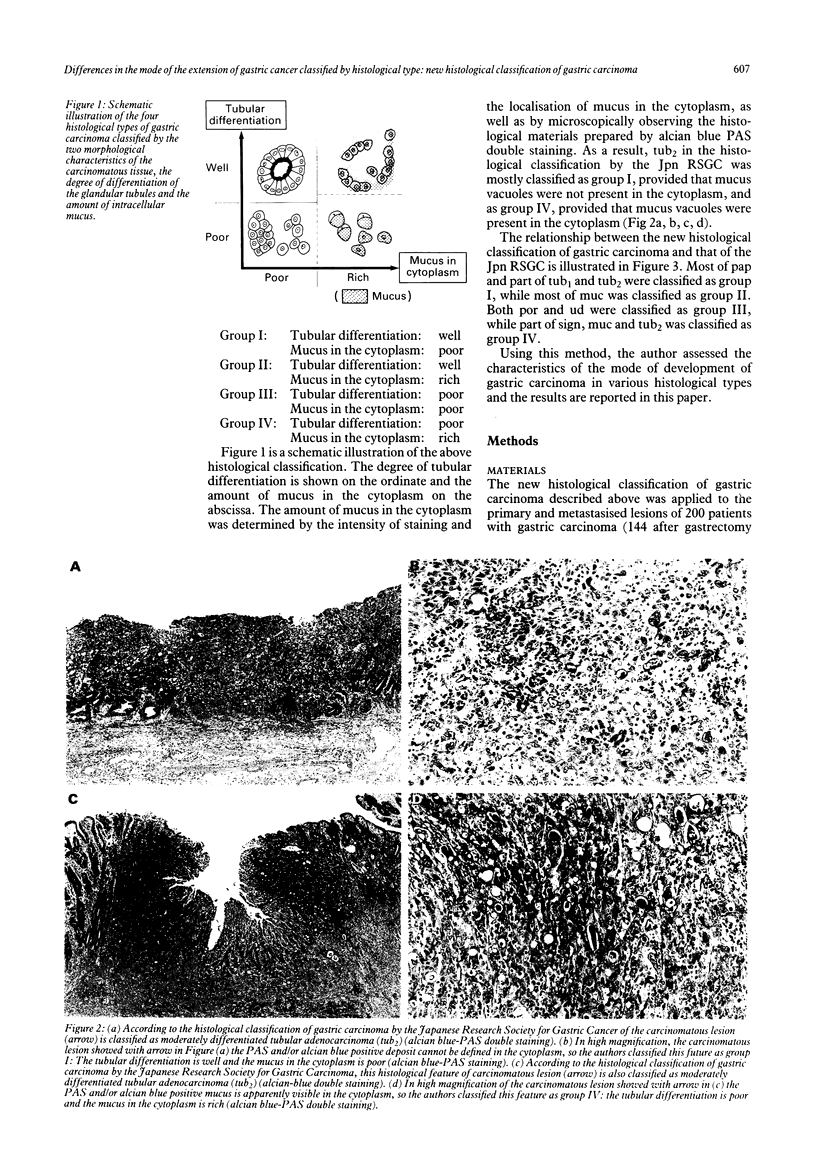
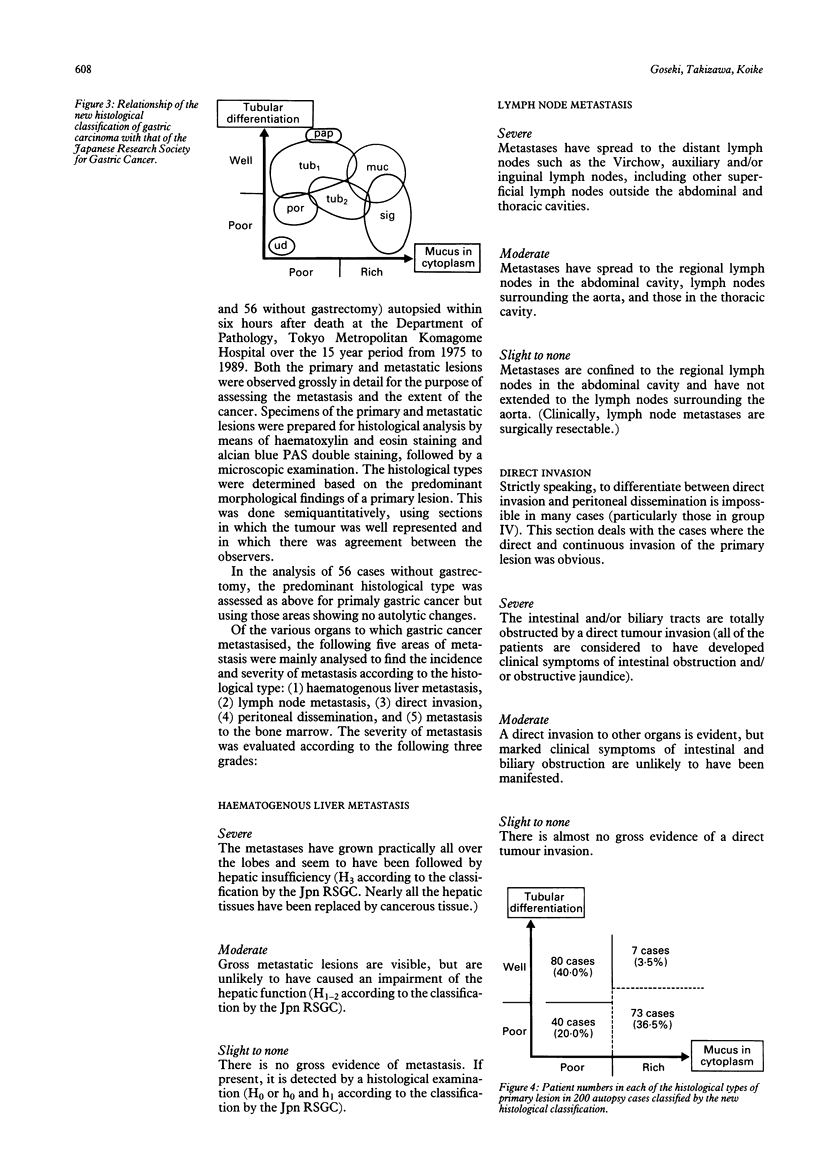

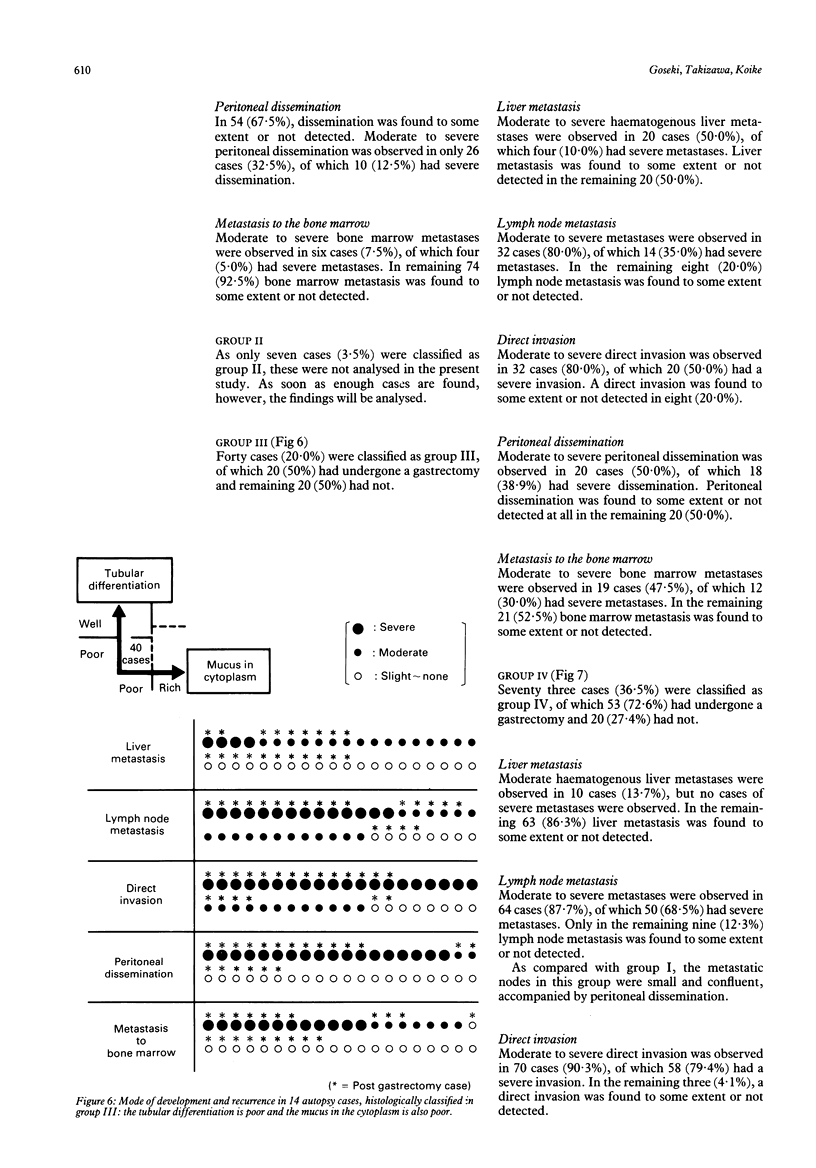
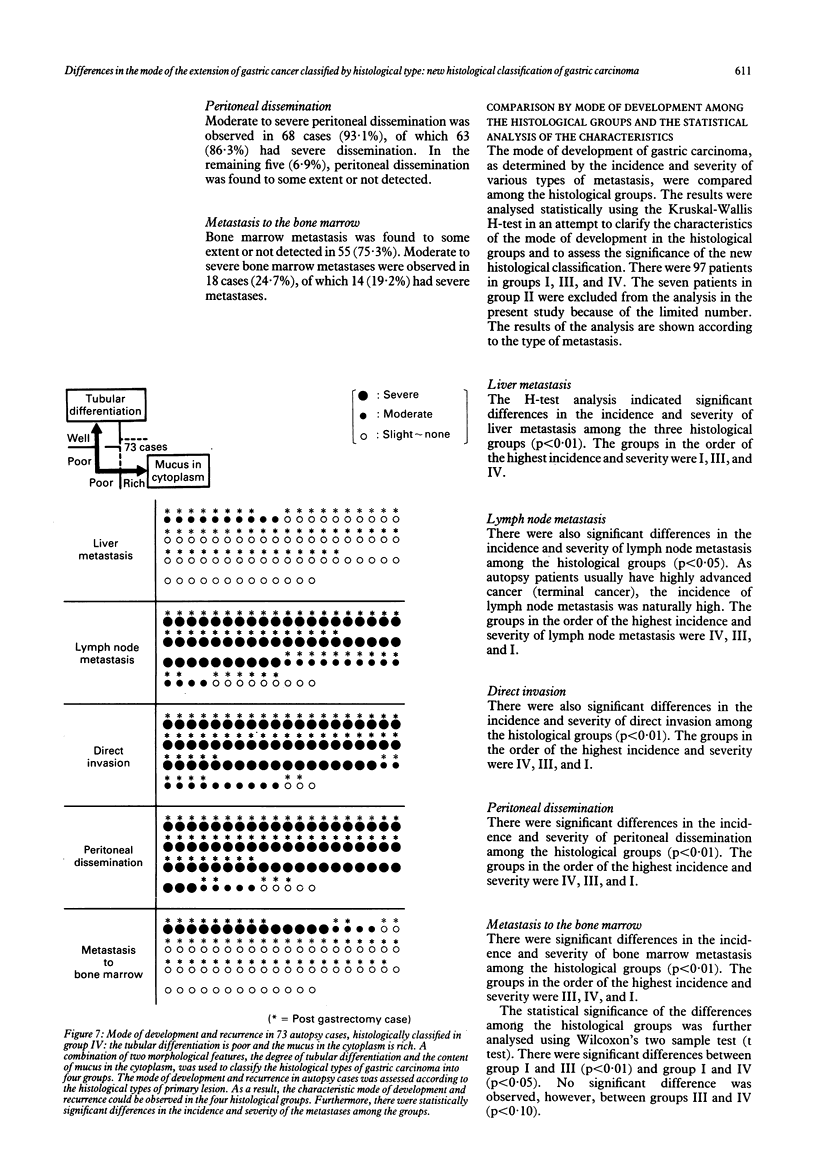
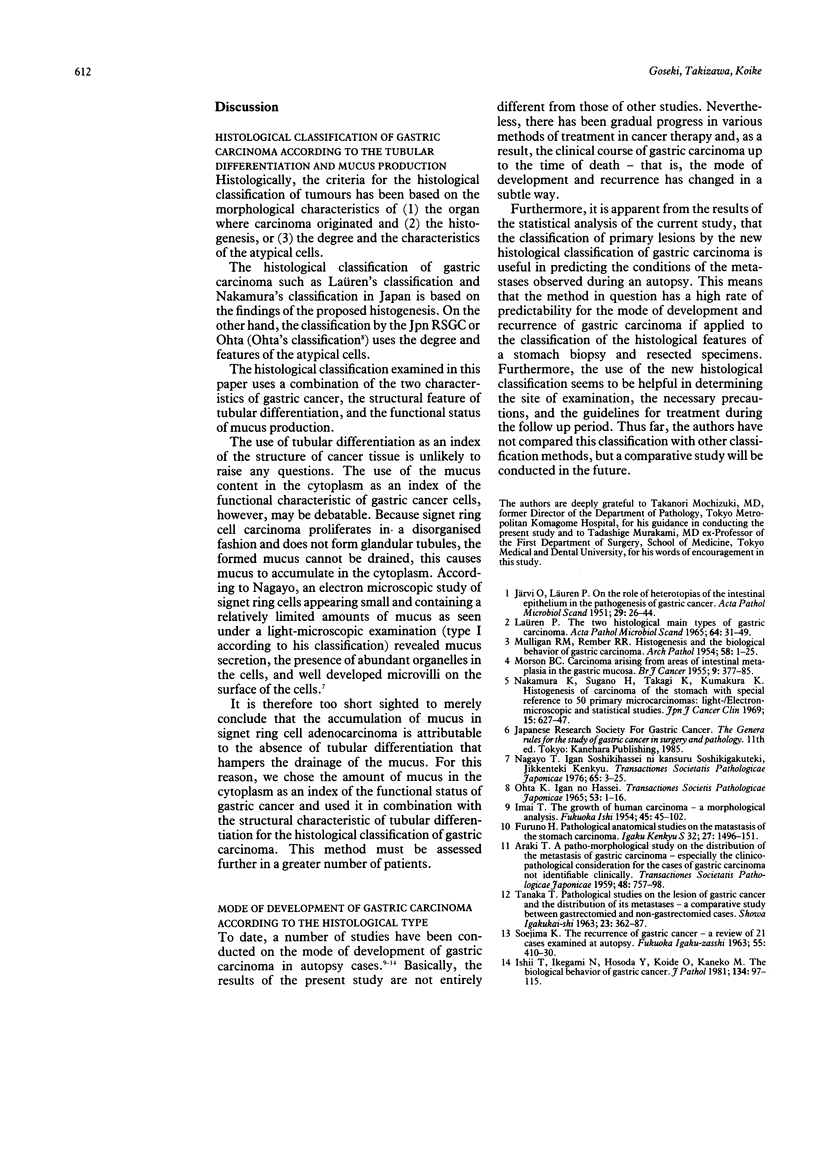
Images in this article
Selected References
These references are in PubMed. This may not be the complete list of references from this article.
- Ishii T., Ikegami N., Hosoda Y., Koide O., Kaneko M. The biological behaviour of gastric cancer. J Pathol. 1981 Jun;134(2):97–115. doi: 10.1002/path.1711340202. [DOI] [PubMed] [Google Scholar]
- JARVI O., LAUREN P. On the role of heterotopias of the intestinal epithelium in the pathogenesis of gastric cancer. Acta Pathol Microbiol Scand. 1951;29(1):26–44. [PubMed] [Google Scholar]
- LAUREN P. THE TWO HISTOLOGICAL MAIN TYPES OF GASTRIC CARCINOMA: DIFFUSE AND SO-CALLED INTESTINAL-TYPE CARCINOMA. AN ATTEMPT AT A HISTO-CLINICAL CLASSIFICATION. Acta Pathol Microbiol Scand. 1965;64:31–49. doi: 10.1111/apm.1965.64.1.31. [DOI] [PubMed] [Google Scholar]
- MORSON B. C. Carcinoma arising from areas of intestinal metaplasia in the gastric mucosa. Br J Cancer. 1955 Sep;9(3):377–385. doi: 10.1038/bjc.1955.36. [DOI] [PMC free article] [PubMed] [Google Scholar]
- MULLIGAN R. M., REMBER R. R. Histogenesis and biologic behavior of gastric carcinoma: study of one hundred thirty-eight cases. AMA Arch Pathol. 1954 Jul;58(1):1–25. [PubMed] [Google Scholar]
- Nakamura K., Sugano H., Takagi K., Kumakura K. [Histogenesis of cancer of the stomach, with special reference to light and electron microscopic and statistical studies of primary microcarcinoma of the stomach]. Gan No Rinsho. 1969 Jul;15(7):627–647. [PubMed] [Google Scholar]
- TANAKA T. [PATHOLOGIC STUDIES ON THE LESION OF GASTRIC CANCER AND THE DISTRIBUTION OF ITS METASTASES. THE COMPARATIVE STUDY BETWEEN GASTRECTOMIED AND NON-GASTRECTOMIED CASES]. Showa Igakkai Zasshi. 1963 Nov;23:362–387. [PubMed] [Google Scholar]



